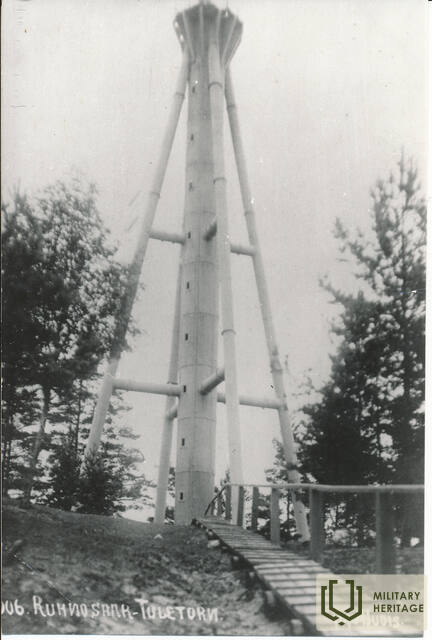Ruhnu salos švyturys Infrastruktūra

Šis švyturys yra aukščiausiame salos taške, ant Håubjärre (Haubjerre) kalvos.
1875 m. metalinio švyturio komponentai buvo užsakyti iš Havre (Prancūzija) įsikūrusios įmonės „Forges et chantiers de la Méditerranée“, o iš „Sautter, Lemonnier & Co.“ buvo užsakytas antros klasės dioptrinis švyturys su nuolatine šviesa. Komponentai atkeliavo 1876 m., o pilnai surinktas švyturys pradėjo veikti 1877 m. 40 metrų ilgio konstrukciją sudaro cilindrinis vamzdis, paremtas šoninėmis atramomis. Vamzdyje yra spiraliniai laiptai, vedantys į viršutinę aptarnavimo erdvę po žibintų kambariu. Švyturį apšvietė keturių dagčių petrolinė lempa, kurios šviesa iškilo 66 metrus virš jūros lygio. 1915 m. gegužės 1 d. vokiečiai mūšio metu susprogdino žibintų kambarį. Laikina aptarnavimo erdvė buvo pastatyta 1921 m. Aptarnavimo erdvė ir žibintų kambarys buvo restauruoti pakeistoje būklėje 1936 ir 1937 m. pagal inžinieriaus Antso Niilre projektus. Pagalbiniai pastatai, pastatyti šalia švyturio XIX a. pabaigoje, vis dar stovi.
Lankytojai gali apžiūrėti švyturį, prižiūrėtojo rezidenciją ir kitus pastatus, kurie yra valstybės saugomi kaip paveldo objektas.
Susijusi laiko juosta
Susijusi istorija
Ruhnu švyturio legenda
Gamykloje pagamintos švyturio konstrukcinės detalės laivu buvo gabenamos į Ruhnu salą.














